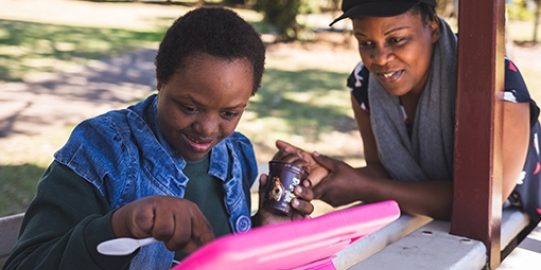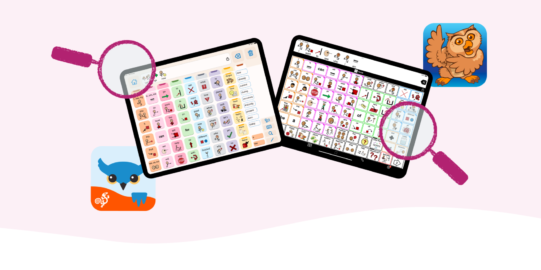What we talk about when we discuss accessibility
Every Global Accessibility Awareness Day, we see thoughtful blog posts coming by about designing for everyone – not just a general audience. It’s also an excellent occasion for the tech community to share often overlooked best practices around the mechanics of accessibility.
All of this has led to a better general understanding of how disability affects someone’s experience, and what still needs to be done to create inclusive websites, apps, and software. But what I’m often missing is an explanation of why the world isn’t accessible in the first place.
In other words, if we believe that accessibility is important and we should be implementing it, why don’t we already consistently and thoroughly account for disability in design? Is it just a knowledge gap, or is there more at work?
Stigma and a history of exclusion
When we sit down to design products, our first thoughts about who will use them are pretty general. We should admit that as a community, we sometimes leave thinking about accessibility to one of the last steps – and it is no accident. When we imagine who we’re building for, disabled people are often excluded from our assumptions, because they are more commonly excluded from general society.
Exclusion isn’t a natural law of the world, like gravity. Our beliefs and behaviors towards those with disabilities are informed by negative and incorrect information in popular culture about disability. People with disabilities often face the following, and more:
- Exclusion: Disabled people are often left out of social activities. Others may be hesitant to make eye contact or approach those with a visible disability.
- Stereotyping: People with disabilities are often assumed to be helpless or unable to think or act for themselves. Others may also assume that people with one disability automatically also have other disabilities.
- Discrimination: Even though it is illegal in many places, disabled people are often denied jobs, housing or other opportunities because of stereotypes about disability.
A society which systematically excludes disabled people teaches us not to value or account for their needs. A long history of stigma against disability informs everyone’s perception of who they are designing for: who is included in the audience, what they want, and what kinds of needs are worth taking the time to consider and accommodate.
Where do your attitudes and opinions come from? Whose needs and wants are you prioritizing, and why? Examine what you believe and how you respond to disability. This is a necessary step in unraveling the negative assumptions that society has taught you and everyone else about disability.
It’s ok to admit that you don’t know about these things, or that you may have been misinformed in the past. But it is also your responsibility to learn about how to design inclusively in the future.
My experience: communication and opportunities
I started designing for accessibility during my graduation project for my Masters in Interaction Design. I spent a week co-designing with the Deaf community in India to help bridge the communication gap between Deaf patients and healthcare staff at hospitals. The workshop participants were students from an educational institute for people with disabilities. Although the institute makes great efforts to educate their students, I couldn’t help but notice that the training these students received only qualified them for technical jobs, like handymen. The assumption, it seemed to be, was that they would only be suited for manual labor anyway – restricting their job opportunities at the outset.
Communication—via language, art, or expressing feelings—isn’t just how people grow and develop. Those who can communicate more easily are also generally included more in society, which gives them access to better opportunities. But in this case, while the Deaf students might have already had fewer opportunities due to the difficulty of communicating with others who don’t use sign language, their economic prospects were also further restricted by the assumptions and actions of the institute.
Communication as a human right
Being able to communicate opens endless doors of opportunity. There are a lot of people with speech or cognitive disabilities who wish to communicate but have not had access to the right tools or guidance. At AssistiveWare, we believe that communication is a right for everyone, regardless of presumed ability. Not being able to speak is far from having nothing to say. When we design products, spend time listening to our users and understanding their challenges. We do this so we can give them the right solution through our products. Every user has unique needs. We try to give each user the flexibility to customize our apps to best suit their requirements. For instance, some of our users with fine motor challenges need to slow down the response time after each tap. Others with visual challenges may need to adjust the appearance of the screen.
Designing to overcome physical challenges is one thing, but fully respecting your users is another. Let me give an example. One of our main apps, Proloquo2Go, is often used by beginning communicators, who are learning both words and communication skills. Their speech therapists, teachers, parents and other communication partners interact with them using the app. One of the things we encourage these communication partners to do is to recognize and value all communication, just as they would with speech.
Sometimes, we have communication partners ask us how to remove a single button, like “candy”, to stop a non-verbal child from repeating the word over and over again. The question we ask them is: how would you stop a verbal child from requesting something over and over? You wouldn’t physically restrain them to stop them from speaking. Taking a button away from someone’s communication system is essentially the same idea.
Just like the example earlier about restricting educational opportunities, restricting someone’s ability to communicate how they want is a form of exclusion. No matter how someone uses a product, they deserve to be included in all of its functionality.
Designing for a more inclusive society
Accounting for the bare minimum of physical accessibility is not enough. Your products must be respectfully designed to recognize the humanity and autonomy of your users. As much as possible, check to make sure that what you are building contributes to an accessible and inclusive society, rather than a stigmatizing and exclusionary one.
If you’re still looking for ideas of how to implement accessibility in your products, here are a few things to think about:
- Pay attention to color and contrast.
- Use alternative text.
- Use larger clickable and tappable areas.
- Create personas with constraints.
- Use both light tech and high tech solutions – not everyone can access a digital interface.
- Consider the user’s environment



